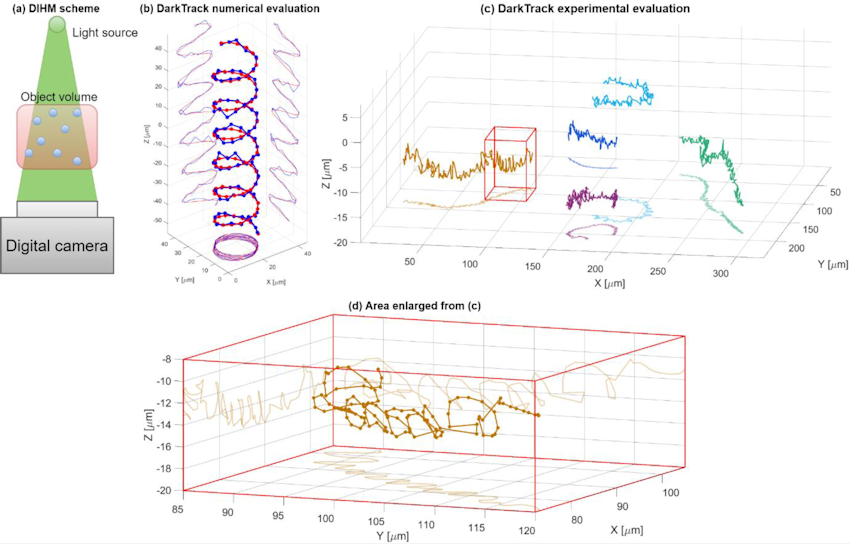Object 4D tracking in lensless digital in-line holographic microscopy
Mikołaj Rogalski
supervisor: Michał Józwik
Lensless digital in-line holographic microscopy (DIHM) is a well-known technique that enables observing specimens in a large field of view (even above 100 mm2) and without optical aberrations. DIHM hardware setups are usually composed of only illumination source, camera and the sample placed between those, Fig1(a). On the camera there is recorded a sample’s Gabor hologram, which then needs to be backpropagated to the object plane to recover the measured object’s complex optical field (both amplitude and phase information). DIHM is also faced with a several challenges, that need to be solved to provide satisfactory specimen’s imaging. One of them is the problem of finding the propagation distance at which the retrieved optical field of the object would be in-focus, what is usually done by applying one of the several proposed autofocusing algorithms. Those algorithms are robust as long as the sample is placed only in a single focus plane, to which the hologram will be backpropagated. However, when the DIHM is used for observing a group of objects placed at different distances form the camera, in the single reconstruction only a single plane may be reconstructed in-focus.
Here is presented an algorithm called DarkTrack, that can reconstruct 3D object positions from a single 2D hologram or to perform 4D tracking (x,y,z,time) from the hologram series. It is based on classical binarization-based methods for segmenting the objects in 2D (x,y) and then it is applying the DarkFocus autofocusing algorithm individually to each found object, to find its defocus distance (z). Processing path finishes with objects temporal linking across different frames (time). Proposed algorithm is evaluated both on simulated microbeads, Fig. 1(b), and experimental data consisting human spermatozoids, Fig. 1(c),(d).

Fig. 1 (a) scheme of a DIHM system for imaging a high depths volumes, (b) simulated (red) and reconstructed (blue) 4D locations of the 5 μm microbead,
(c) reconstructed 4D locations of the human spermatozoids, (d) enlarged fragment from (c), where the spermatozoid spiral movement may be observed.